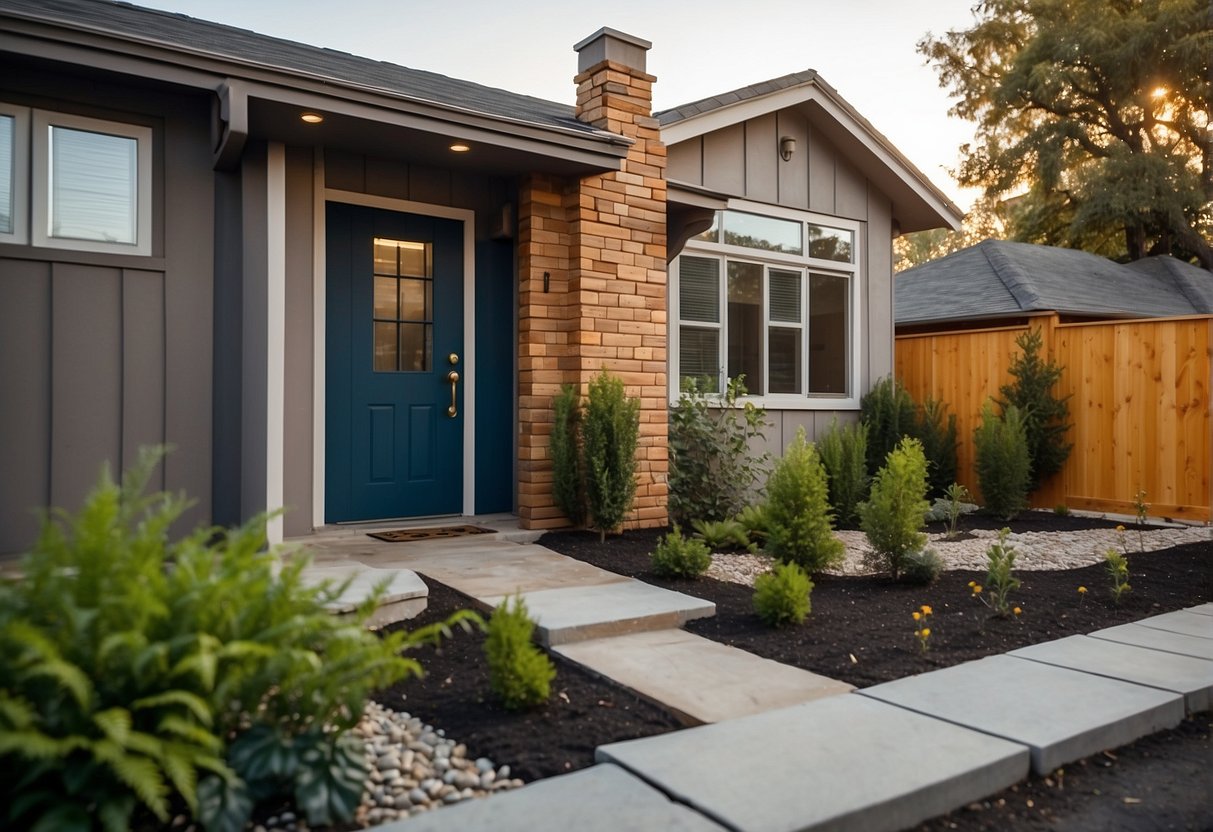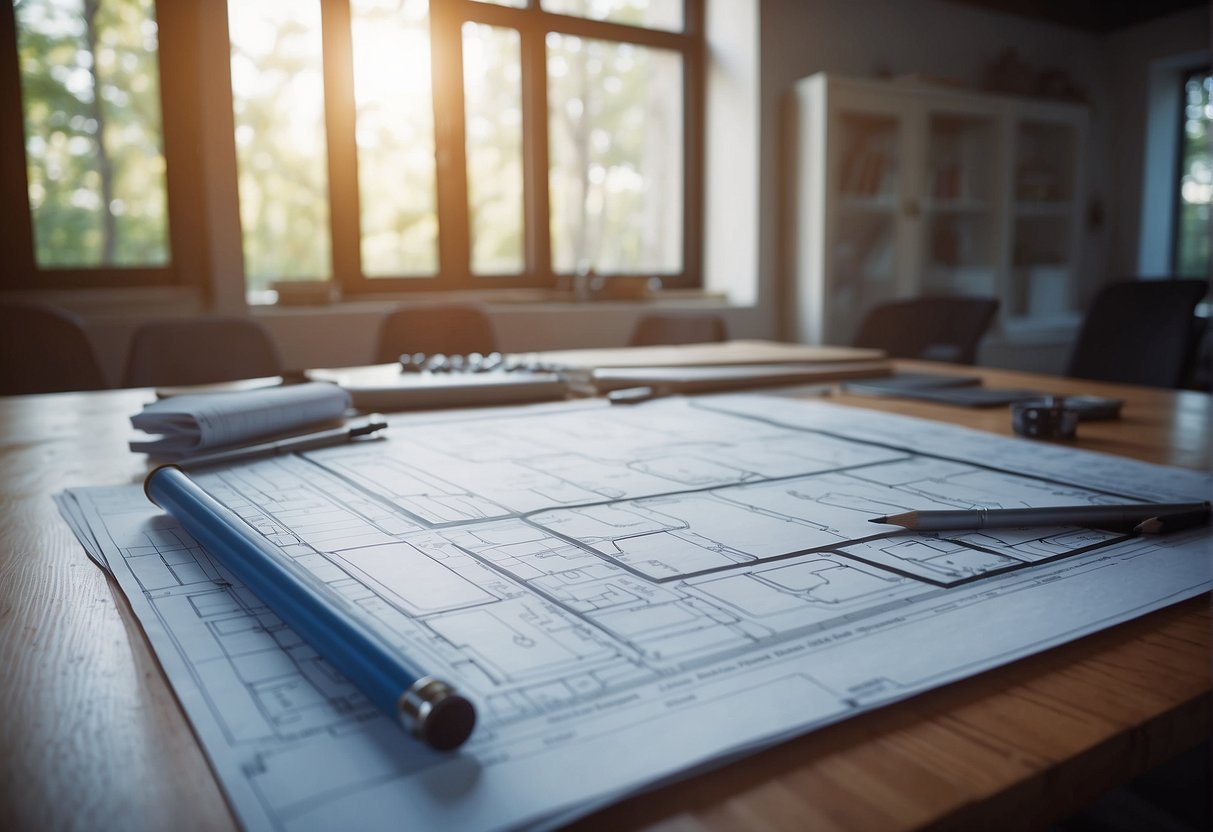An Accessory Dwelling Unit (ADU) is a secondary housing unit on a single-family residential lot. It provides additional living space independently from the primary dwelling and can take many forms, including attached or detached structures, garage conversions, or basement apartments. ADUs have gained popularity in the real estate market as a flexible housing solution that can address diverse needs, from offering a home for aging relatives to providing rental income for homeowners.

The rise of ADUs reflects changes in zoning regulations in many regions that aim to tackle the shortage of affordable housing. These units are recognized for their potential to increase property values and enhance housing flexibility without altering neighborhood character. Planning and constructing an ADU involves understanding the legalities, zoning laws, and financial considerations, as well as managing construction and potential rental processes.
Key Takeaways
- ADUs are secondary housing options on existing residential lots.
- They offer benefits such as added property value and housing supply flexibility.
- The creation of an ADU entails navigating legal, financial, and construction considerations.
Understanding ADUs
Accessory Dwelling Units (ADUs) represent a versatile housing option that can serve various functions like affordable housing, a space for multigenerational living, or a means for homeowners to gain extra income through rent.
Historical Context of ADUs
ADUs have a rich history, with their popularity surging post-World War II as a solution to housing shortages. These units provided a pragmatic approach to accommodating returning soldiers and evolving family dynamics. Historically known as granny flats or in-law suites, ADUs have been an integral part of the housing landscape, offering an affordable housing option that can also increase property value.
Different Types of ADUs
There are several distinct types of ADUs, each catering to different needs and property layouts:
- Attached ADU: Shares a wall with the main house.
- Detached ADU: Stands alone from the primary residence.
- Junior ADU: Typically a smaller unit within the existing footprint of a home.
- Basement Apartment: Located below the main house.
- Garage Conversion: Transforming a garage space into a livable unit.
- Carriage House/Backyard Cottage: An independent structure often situated in the rear of the property.
Functionality and Benefits
Functionality: ADUs are self-contained units that include the necessary amenities for independent living, making them ideal for tenants or family members.
Benefits:
- Provides affordable housing in areas with high living costs.
- Enables multigenerational living, allowing families to stay close.
- Offers homeowners a way to generate extra income through rental income.
- Can serve as an investment that potentially increases property value.
- Promotes better use of urban space as an affordable housing option.
By understanding the diverse applications and advantages of ADUs, homeowners and investors can make informed decisions about how these structures might fit into their real estate goals.
Planning and Designing an ADU

When planning and designing an accessory dwelling unit (ADU), homeowners must carefully consider their specific needs and the functional design aspects to ensure the ADU complements the primary residence and meets the intended use, whether as a guest house, office, or studio.
Selecting the Right Type for Your Needs
The initial step is to define the ADU’s purpose. Will it serve as a private living space for family members, a rental unit to generate income, or a dedicated office or studio? Stand-alone structures often afford more privacy and could align with goals for a separate guest house. Conversely, if the ADU is meant for more integrated family use, an attached addition or conversion of existing space, such as a basement or garage, into separate living quarters could be more suitable.
Design Considerations
When designing an ADU, one must prioritize functionality within the compact space. Efficient use of space is key. A well-planned ADU includes a kitchen, bathroom, and an area for eating and sleeping. The design should reflect the aesthetics of the primary residence while maximizing privacy for both the ADU occupants and the main household.
- Kitchen: Emphasize space-saving designs; consider compact appliances.
- Bathroom: Incorporate multi-functional fixtures without compromising comfort.
- Living Space: Aim for an open plan to enhance spaciousness; make wise furniture choices.
Choosing a reputable contractor experienced in ADUs is crucial. They can address legalities, ensure proper design execution, and help navigate zoning laws. It’s also important to evaluate the long-term maintenance needs and the sustainability of the materials used in construction.
Zoning Laws and Legalities

When exploring the potential of an Accessory Dwelling Unit (ADU), it is crucial to understand that zoning laws and the permit process play key roles in what is feasible and legal on a property.
Understanding Local Zoning
Local zoning laws shape the creation and use of ADUs. These laws specify the types of dwellings allowed in a particular area and govern aspects like size, placement, and use. Homeowners should review their local zoning regulations to ensure their plans for an ADU comply with current zoning categories, such as residential, commercial, and mixed-use. Violations of zoning laws can lead to significant fines.
In some regions, zoning regulations are evolving to accommodate growing interest in ADUs, often seen as a solution to housing shortages. Homeowners should regularly consult their city’s planning department for the most up-to-date information, as these laws are subject to change.
Navigating the Permit Process
The permit process can be complex, and it typically requires multiple steps:
- Pre-application: Before submission, homeowners should discuss their ADU project with local planning officials to understand the specific legal requirements.
- Application Submission: Fill out and submit the required forms along with detailed building plans and site plans. Permit fees will apply at this stage.
- Review: The submitted plans will be reviewed for compliance with local building and zoning laws.
- Approval or Rejection: If plans meet all requirements, a building permit is granted. If not, the homeowner will need to address any issues raised.
Throughout this process, understanding the intricacies of local building and zoning laws ensures a smoother journey from concept to construction. Homeowners should gather relevant information on required permits for their particular construction project to avoid any legal complications. Engaging with professionals, such as architects or permit services, can streamline acquiring a building permit and ensure adherence to all legal requirements.
Financing and Costs
Constructing an Accessory Dwelling Unit (ADU) requires careful financial planning, taking into account both the upfront costs and the long-term returns. Homeowners should consider various financing strategies to manage expenses such as materials, construction, and permit fees, while also evaluating the potential income an ADU can generate in the rental market.
Budgeting for Your ADU
When planning to build an ADU, the primary consideration should be the budget, which includes materials, construction costs, permit fees, and contractor expenses. Homeowners need to ensure they have enough cash on hand or access to financing to cover these upfront costs. It’s imperative to include a contingency fund for unexpected expenses that often arise during construction.
Financing Options
A variety of financing options are available for building an ADU:
- Home Equity Loan: Using the existing equity in the property for a loan.
- HELOC (Home Equity Line of Credit): A flexible line of credit based on home equity.
- Cash-out Refinance: Refinancing the existing mortgage for an amount higher than the current loan balance and using the extra cash for the ADU.
- Renovation Loan: Specifically designed for financing home improvements.
- Mortgage: Some property owners may opt for a separate mortgage for the ADU if it increases the overall value of the property.
Interest rates and conditions vary, so it’s important to compare all available financing options to find the most cost-effective solution.
Understanding the Return on Investment
Investing in an ADU can yield significant financial returns through rental income. The rental market often dictates the amount of income an ADU may generate, so researching local rates is crucial. Additional considerations should include maintenance costs, property taxes, and the impact the ADU has on overall property value. The return on investment (ROI) should be evaluated against the initial investment and the ongoing expenses to ensure it aligns with the homeowner’s financial goals.
Construction and Renovation
In the realm of real estate, constructing an ADU, whether attached or detached, necessitates detailed planning and adherence to various construction phases, while renovation and conversion projects often involve transforming pre-existing structures to create livable and compliant ADU spaces.
Construction Phases
Initial Planning and Design: The construction of an ADU begins with a thorough planning stage. One must develop comprehensive blueprints that address the layout, size, and functionality of the unit, ensuring compliance with local zoning laws and building codes. Selecting appropriate building materials is crucial, as they influence the ADU’s durability and aesthetic appeal.
Securing Permits: Prior to breaking ground, property owners must obtain necessary permits from local authorities. This step verifies that the planned structure meets all legal requirements and safety standards.
Foundation and Framing: The physical construction starts with laying a foundation, which varies depending on whether the ADU is detached or attached to the main residence. Subsequently, contractors proceed with framing the structure, outlining the ADU’s shape and form.
Installation of Utilities and Finishing: This phase involves the installation of essential services such as electricity, plumbing, and heating. Upon completion of these systems, contractors finish the interior and exterior of the ADU, including insulation, drywall, fixtures, and exterior cladding, thus preparing the unit for occupancy.
Renovation and Conversion Projects
Garage Conversions: Many homeowners opt to convert existing garages into ADUs. Such projects involve retrofitting the garage space to meet residential living standards, installing windows, proper insulation, and upgrading the electrical and plumbing systems.
Basement and Attic Transformations: Basements and attics can be repurposed into functional ADUs with proper renovation. This often includes ensuring adequate ceiling height, ingress and egress compliance, moisture control, and enhancing the structural integrity to support additional living space.
Throughout both construction and renovation processes, regular maintenance is paramount to safeguard the structural health of the ADU. Homeowners are advised to engage with reputable contractors who specialize in ADU projects to ensure quality workmanship and adherence to all regulatory requirements.
Managing Your ADU
Managing an Accessory Dwelling Unit (ADU) effectively can increase property value and provide a steady stream of rental income. However, it requires attention to rental management practices, fulfilling landlord responsibilities, and keeping up with maintenance.
Rental Management and Landlord Responsibilities
As a landlord, one must navigate the complexities of rental management. This includes setting competitive rent prices to ensure additional income while also attracting and retaining tenants. The landlord should be well-versed in local housing laws to handle lease agreements, conduct tenant screenings, and manage security deposits effectively.
- Rental Income: Determine the rent by analyzing local market rates to balance profitability and occupancy rates.
- Tenant Relations: Build a positive relationship with tenants through clear communication and responsiveness.
- Legal Compliance: Stay updated on landlord-tenant laws and ensure all practices comply with regulations to avoid legal issues.
Maintenance and Upkeep
To preserve or enhance the ADU’s property value, consistent maintenance and upkeep are critical. They are not only essential for tenant satisfaction but also play a role in reducing long-term repair costs.
- Routine Inspections: Schedule regular inspections to identify and address repair needs early.
- Monthly Expenses: Include a budget for utilities and maintenance as part of the monthly expenses to ensure a well-functioning rental unit.
- Emergency Fund: Allocate funds for unexpected repairs to address issues swiftly without financial strain.
By managing an ADU effectively, one can ensure it remains a valuable and attractive property, providing benefits like passive income and increased property value.
Impact on Homeowners and Communities
Homeowners and communities are navigating the nuances of Accessory Dwelling Units (ADUs) which are influencing property values and taxes, as well as contributing to addressing housing shortages.
Property Value and Taxes
Property Value Impact: The addition of an ADU on a property can lead to a rise in property value. For instance, a well-constructed ADU can act as an appealing feature for potential buyers, as it offers extra living space or the potential for rental income. This potential for increased income can substantially impact real estate values.
Property Taxes: With the increase in property value, there typically comes an increase in property taxes. However, the exact impact on taxes can vary depending on local tax laws and assessments. There’s also a consideration that improved properties contribute more to the local community in the form of these taxes.
Addressing the Housing Shortage
Affordable Housing: ADUs are playing a role in providing affordable housing options in areas experiencing housing shortages. They serve as an investment for homeowners while offering lower-cost living spaces for renters within established neighborhoods.
Community and Housing Boom: The rise in popularity of ADUs, partly fueled by the recent housing boom and the pandemic’s influence on real estate, highlights their effectiveness in creating more diverse community living options. Cities are adapting regulatory frameworks to facilitate the integration of ADUs, which can help to alleviate the housing crunch and diversify housing stock in single-family zones.
Frequently Asked Questions
This section provides clear answers to common inquiries regarding accessory dwelling units (ADUs) in the context of real estate.
What are the basic requirements to build an ADU on my property?
To build an ADU, property owners must adhere to local zoning regulations, which typically include lot size minimums, setbacks, parking requirements, and maximum unit size. It’s essential to consult with the local planning department to ensure compliance with all relevant codes and regulations.
Can you explain the term ADU in a real estate context?
In real estate, an ADU is a secondary housing unit situated on the same property as a primary residence. Types of ADUs include detached units like backyard cottages, attached units such as over-garage apartments, and interior conversions like basement suites.
In which states is the construction of ADUs allowed?
The construction of ADUs is permitted in many states across the U.S. with some states like California, Oregon, and Washington leading the way in ADU-friendly legislation. However, regulations can vary widely even within states, so it’s important to check local laws.
How might an ADU affect a property’s appraisal value?
An ADU can potentially increase a property’s appraisal value by adding square footage and functional living space, which can be attractive to buyers seeking rental income potential or additional room for family members.
What are some common drawbacks associated with building an ADU?
Some common drawbacks of building an ADU include the potential for high construction costs, the impact on privacy and available yard space, and the need to navigate complex building codes and permitting processes.
Are there any grants available for constructing ADUs, such as the $25,000 grant?
Some municipalities and states offer incentives or grants for constructing ADUs to address housing shortages. For instance, programs like the $25,000 grant in California provide financial assistance to homeowners looking to build ADUs. Eligibility requirements and availability can vary, so homeowners should research local programs.

